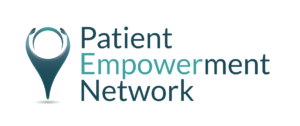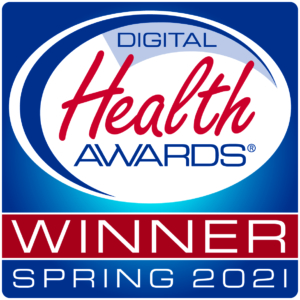Changes to Medicare Part D in 2024 and 2025
The Inflation Reduction Act of 2022 put into play some major changes to Medicare Part D enrollees. The purpose of the changes was to reduce out-of-pocket costs for prescription drugs.
I always recommend Medicare enrollees review their current plan and current and anticipated medications to make sure they have the best plan for optimal coverage. Always remember that there is a separate co-pay, deductible, premium, and max out-of-pocket from your Medicare health insurance plan.
Let’s review these upcoming changes to the current plan. In 2023, there are 4 distinct Phases to Medicare Part D, where the cost-sharing drug costs paid by Part D enrollees, Part D plans, drug manufacturers, and Medicare varies.
Comparisons 2023-2025:
-
Deductible phase
Enrollees pay 100% of their drug costs, up to $505. Note: not all Part D plans charge a deductible, however in the stand-alone Part D plans, many enrolled are responsible for a standard deductible.
-
Initial Coverage phase
Part D enrollees pay 25% of total drug costs and Part D plans pay 75%, up to total costs of $4660. Most Part D plans charge a mix of copayments and coinsurance rather than a standard 25% coinsurance rate.
2025 changes – Drug manufacturers will be required to provide a 10% discount on brand-name drugs. This will replace the 70% price discount in the coverage gap phase under the current benefit design. Part D plans will pay 60% of brand-name drug costs. -
Coverage Gap phase
Part D enrollees pay 25% of the total drug costs for both brand-name and generic drugs. Part D plans pay the remainder 75% of generic drug costs and 5% of brand costs. Drug manufacturers provide 70% price discounts on brands. Note there is no manufacturer price discount on any generic drug.
2025 changes include: A new $2,000 out-of-pocket cap. (This cap does not apply to out-of-pocket spending on Part B drugs), elimination of the coverage gap phase, a higher share of drug costs paid by Part D plans in the catastrophic phase, along with a new manufacturer price discount and reduced liability for Medicare in this phase, and changes to plan costs and the manufacturer price discount in the initial coverage phase. -
Catastrophic phase
Medicare pays 80% of total drug cost, part D plans pay 15% and Part D enrollees pay 5%. Part D enrollees qualify for catastrophic coverage when the amount that they pay out of pocket plus the value of the manufacturer discount on the price of brand-name drugs in the coverage gap phase exceeds a certain threshold amount set at $7,400, of which enrollees pay $3100 out of pocket before reaching catastrophic phase. This is based on the cost of brand-name drugs only.
2024 Changes – 5% coinsurance requirement for Part D enrollees will be eliminated and Part D plan will pay 20% of total drug costs instead of 15%. For Part D Enrollees without low-income subsidies, once drug spending is high enough to qualify for catastrophic coverage, they will no longer be required to pay 5% of their drug costs, meaning out-of-pocket is capped.
2024 Changes – the catastrophic threshold is capped at $8,000. This includes what Part D enrollees spend out of pocket plus the value of the manufacturer price discount on brands in the coverage gap phase. Meaning, in 2024 Part D enrollees who take only brand-named drugs will have spent about $3300.00 out of pocket and then will have no more additional cost for these drugs.
2025 Changes – Medicare’s share of total cost in the catastrophic phase (reinsurance, ) will decrease from 80% to 20% for brand-name drugs and from 80% to 40% for generics. Medicare Part D plans’ share of the costs will increase from 15% to 60% for both brands and generics above the cap, and drug manufacturers will be required to provide a 20% price discount on brand-name drugs.
This is very important for those who are taking high-cost cancer drugs such as Revlimid, Pomalyst, Imbruvia, Jakafi, and Ibrance. These drugs have the highest per capita Part D expenditures in 2021. The annual out-of-pocket costs for these cancer drugs range from $11,000 to almost $15,000, and in the catastrophic phase, out-of-pocket costs per drug in 2021 ranged from around $8,000 to nearly $12,000. So eliminating the 5% coinsurance requirement in the catastrophic phase in 2024 means that Part D enrollees without low-income subsidies who use these and/or other high-cost cancer drugs covered by Part D will realize thousands of dollars in savings. You can see the savings especially if you use more than one of these medications.
Additional Changes to Medicare Part D
2024 Changes
- People with Medicare who have incomes up to 150% of federal poverty level and resources at or below the limits for partial low-income subsidy benefits will be eligible for full benefits under Part D Low-Income Subsidy (LIS) Program. The partial LIS benefit currently in place for individuals with incomes between 135% and 150% of Federal Poverty Levels.will be eliminated.
- The calculation of the base benficiary premium will be adjusted, as needed, to limit the increases in the base premium to no more than 6% from prior year values. Note: Premiums for individual Part D premiums and annual plan-level premium increases will continue to vary.
2025 Changes
- Part D enrollees will have the option of spreading out their out of pocket costs over the year rather than face high out of pocket costs in any given month.
So how do you decide how to choose Medicare Drug coverage?
Take an inventory of your needs, now and in the near future. Look at your priorities. Here are a few things to consider when planning:
- What are the drugs you are taking or anticipate taking? Make sure the drug plan you are considering are on that plans formulary. Then, compare the costs.
- If you need protection forn high prescription costs, as is very common for a lot of cancer drugs, look for drug plans offering coverage in the coverage gap, if applicable, and check with these plans to make sure they cover your drugs in the gap.
- If you need to make sure your drug costs share is balanced throughout the year, refer to drug plans with no or low deductibles, or with additional coverage in the coverage gap.
- If you take a lot of generic medications, look at a Medicare drug plan with tiers that charge you nothing or low copayments for generics.
- If you don’t have many drug cost now but want to make sure you have coverage “just in case” to avoid future penalties and for peace of mind, consider Medicare drug plans with low monthly premiums. If you need prescription drugs in the future, all plans must cover most drugs used by Medicare enrollees.
- If you prefer the extra benefits and lower cost available by getting your healthcare and prescription drug coverage from one plan, and, you don’t mind possible restrictions on the doctors, hospitals and other heathcare providers you can use, then consider a Medicare Advantage Plan which has this all bundled into one. Again if you have multiple specialist and complex healthcare needs consider your options carefully.
Again, I encourage everyone to review their options and make the beat choice for you and your family. And most importantly, review yearly. Don’t just look at the cost of premiums when making a decision. When you have expensive medications especially for cancer, it’s important that you stay on treatment. Knowing your options ahead of time and planing for associated cost will help prevent you from beoming financially stressed. Talk with your healthcare provider’s. Ask about generic medication options. Work with the social workers or patient advocates at your healthcare center to search out co-pay, deductible, premium assistance programs available from pharma as well as non-profits that can help you meet your financial obligations for out of pocket expenses.
Resources:

Diahanna Vallentine, BCPA, Financial Empowerment Lead
In 2002 Diahanna and her husband received the news that her husband had MGUS, a precursor to Multiple Myeloma. Upon her husband death in 2013, Diahanna immediately decided to make it her mission to help patients and caregivers empower themselves to speak up and to position themselves as partners in their treatment. Diahanna became a Board-Certified Patient Advocate. She is currently the Financial Myeloma Coach for The Myeloma Crowd Foundation.



